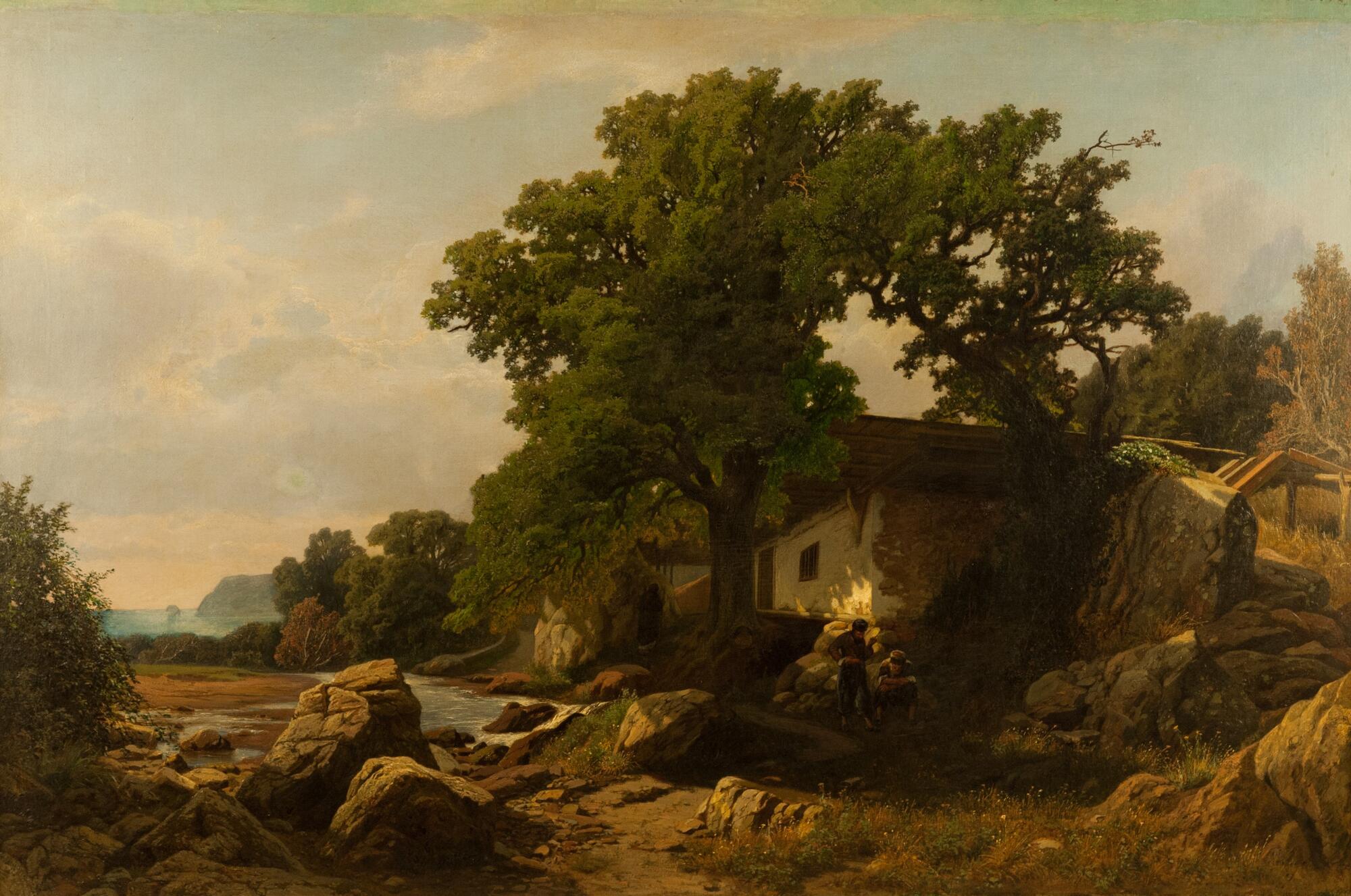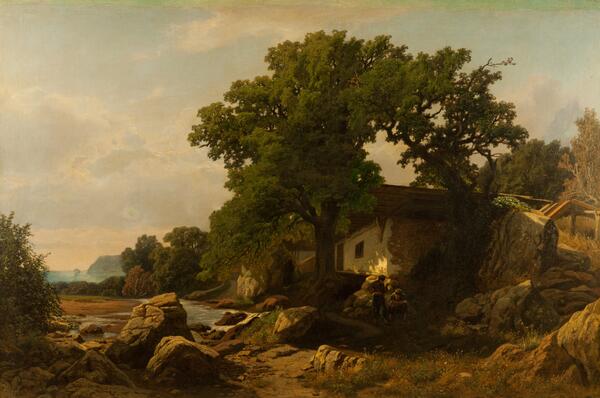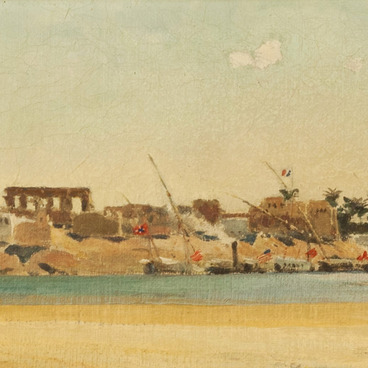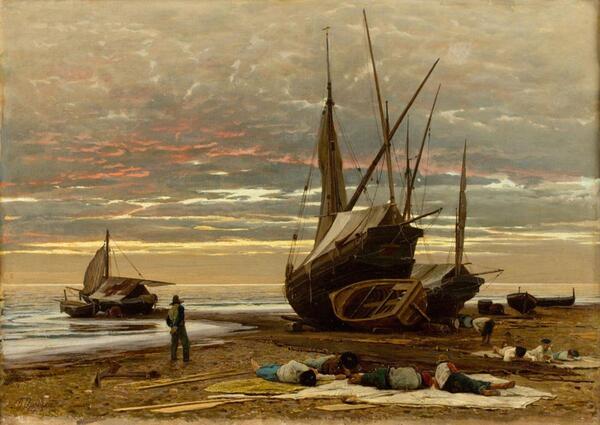Vladimir Orlovsky (1842–1914) was a Russian Academician landscape artist, pupil of Alexei Bogolyubov and author of numerous works done for the Imperial family of Alexander III in Moscow and Saint Petersburg. He also worked in Italy, France, Germany and Switzerland.
Orlovsky had begun painting even before entering the Imperial Academy of Fine Arts in Saint Petersburg in 1861. He made rapid progress and was awarded with the Great Silver medal as early as 1863. During his studies, he did sketches in Crimea, Kiev governorate, Karelia, Finland, and the Caucasus.
Crimean landscapes were the leitmotif of Orlovsky’s artwork. It was for them that he received the Great Gold medal and a stipend to go abroad. Among his Crimean paintings are “Crimea. A Landscape with a River” (1868), “Alushta” (1870) and “The Outskirts of Alushta” (1870) that is now in front of you.
In the foreground, a wide path leads to a house. On both sides of the path there are large boulders, half sunk into the ground. To the left of the path, there is a stream, barely visible at its source but growing wider and fuller by the time it enters the sea that can be seen in the distance. Numerous trees stand along the stream.
The centerpiece of the picture is a house in the shade of an old oak tree with a spreading canopy. Standing by the tree is a woman in some dark clothes with a large hood. She is walking towards the house supporting herself with a walking staff. The house itself is covered with a wooden gable roof, its walls painted white with lime. The house is shown from an angle rather than from the front, but the door and a window near it are still clearly visible. Close to the house, next to a pile of rocks, are two other people: one of them standing, the other one sitting on a rock. Behind the house is a wooden shed with a birch towering over it.
The canvas had been originally held in the collection of Kyiv State Museum of Ukrainian Art before it was transferred to Alupka museum-preserve.
Orlovsky had begun painting even before entering the Imperial Academy of Fine Arts in Saint Petersburg in 1861. He made rapid progress and was awarded with the Great Silver medal as early as 1863. During his studies, he did sketches in Crimea, Kiev governorate, Karelia, Finland, and the Caucasus.
Crimean landscapes were the leitmotif of Orlovsky’s artwork. It was for them that he received the Great Gold medal and a stipend to go abroad. Among his Crimean paintings are “Crimea. A Landscape with a River” (1868), “Alushta” (1870) and “The Outskirts of Alushta” (1870) that is now in front of you.
In the foreground, a wide path leads to a house. On both sides of the path there are large boulders, half sunk into the ground. To the left of the path, there is a stream, barely visible at its source but growing wider and fuller by the time it enters the sea that can be seen in the distance. Numerous trees stand along the stream.
The centerpiece of the picture is a house in the shade of an old oak tree with a spreading canopy. Standing by the tree is a woman in some dark clothes with a large hood. She is walking towards the house supporting herself with a walking staff. The house itself is covered with a wooden gable roof, its walls painted white with lime. The house is shown from an angle rather than from the front, but the door and a window near it are still clearly visible. Close to the house, next to a pile of rocks, are two other people: one of them standing, the other one sitting on a rock. Behind the house is a wooden shed with a birch towering over it.
The canvas had been originally held in the collection of Kyiv State Museum of Ukrainian Art before it was transferred to Alupka museum-preserve.







